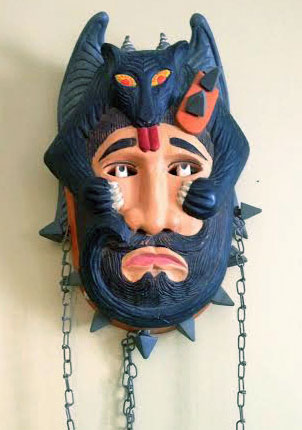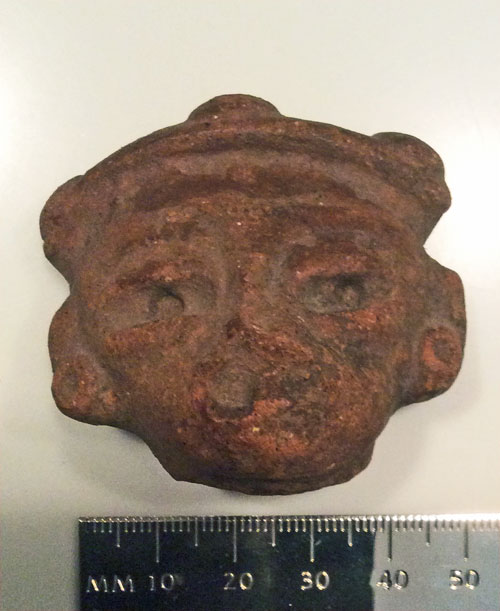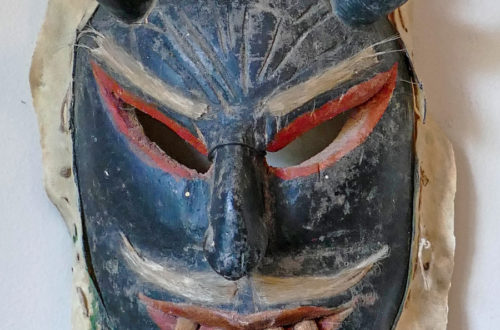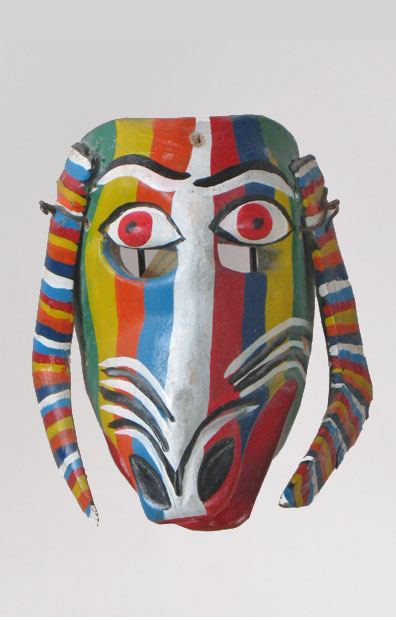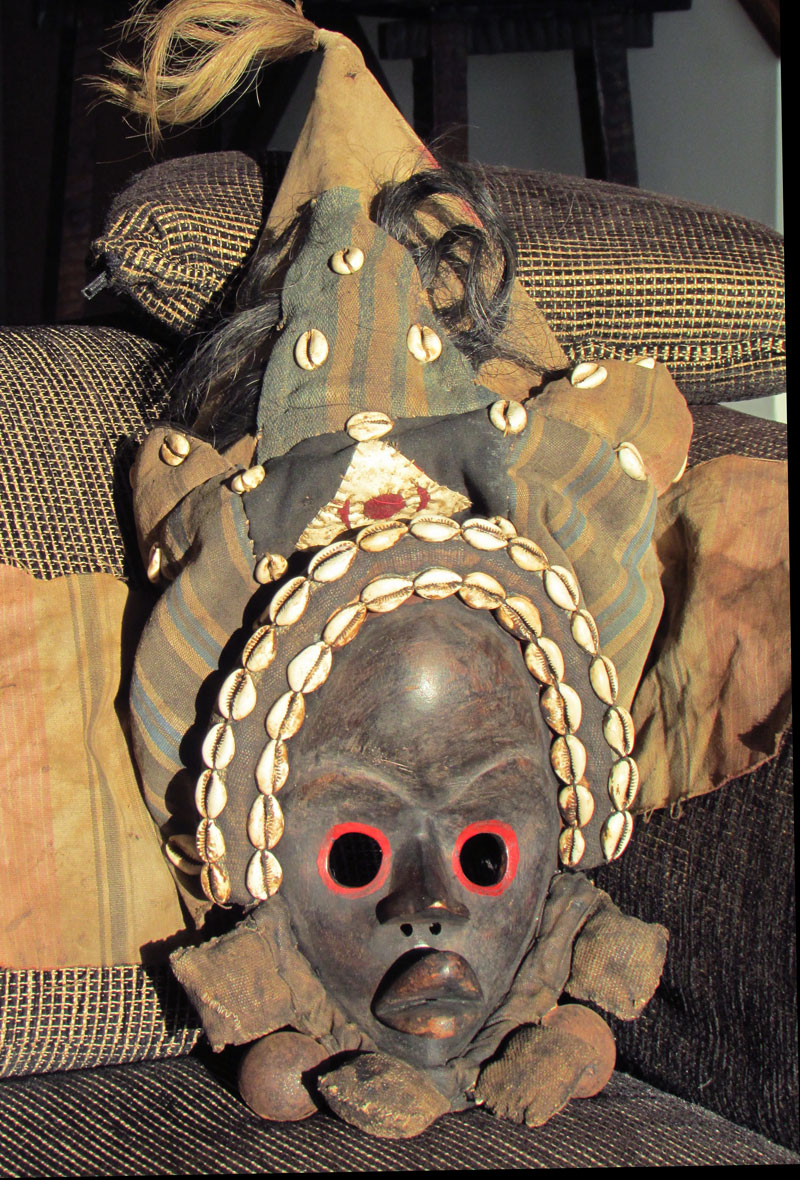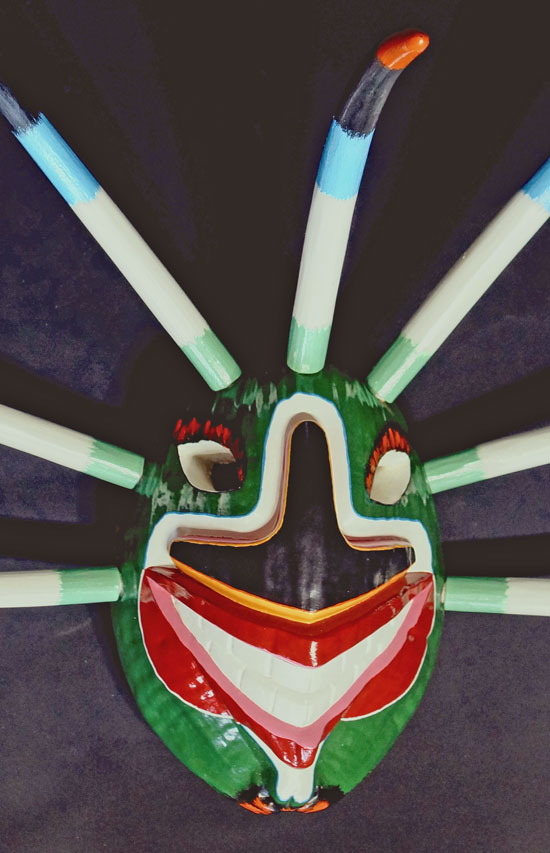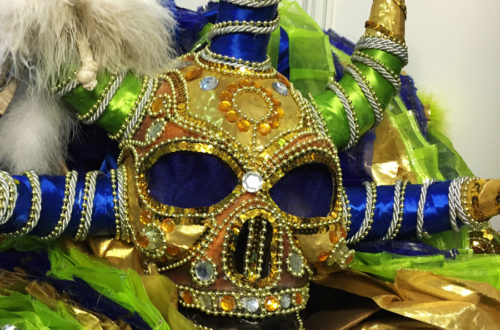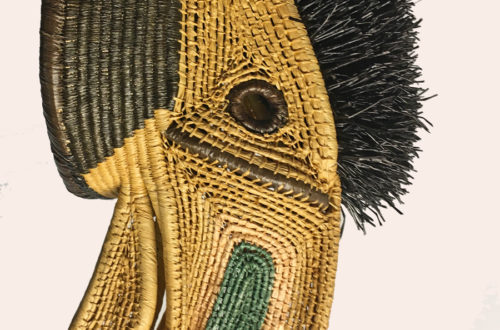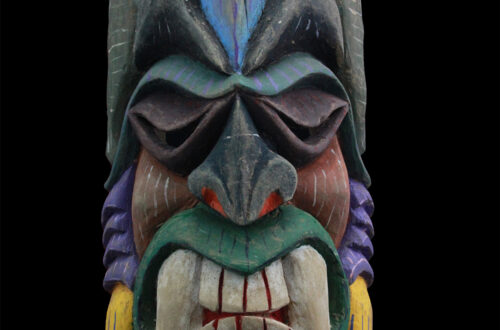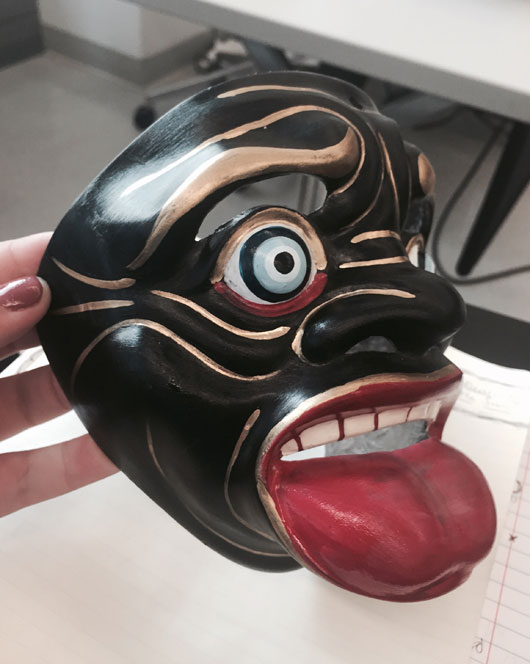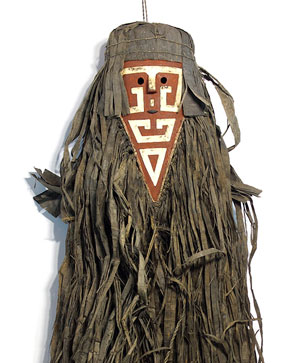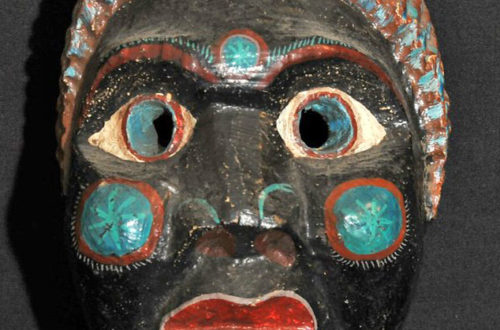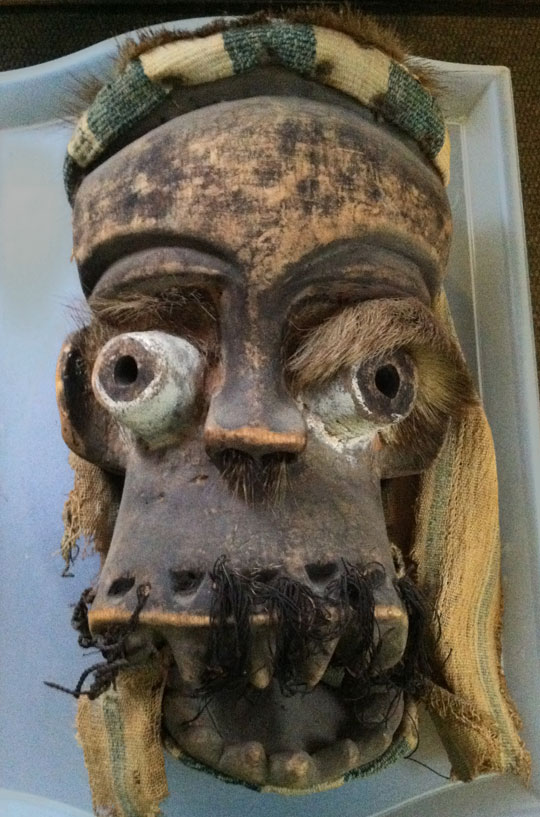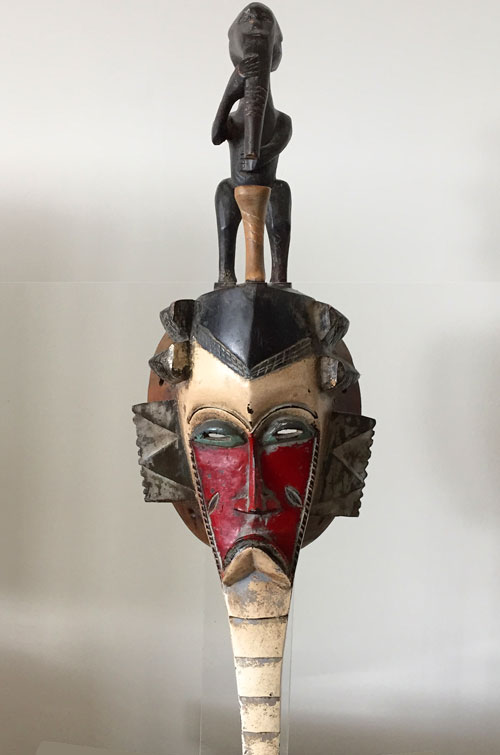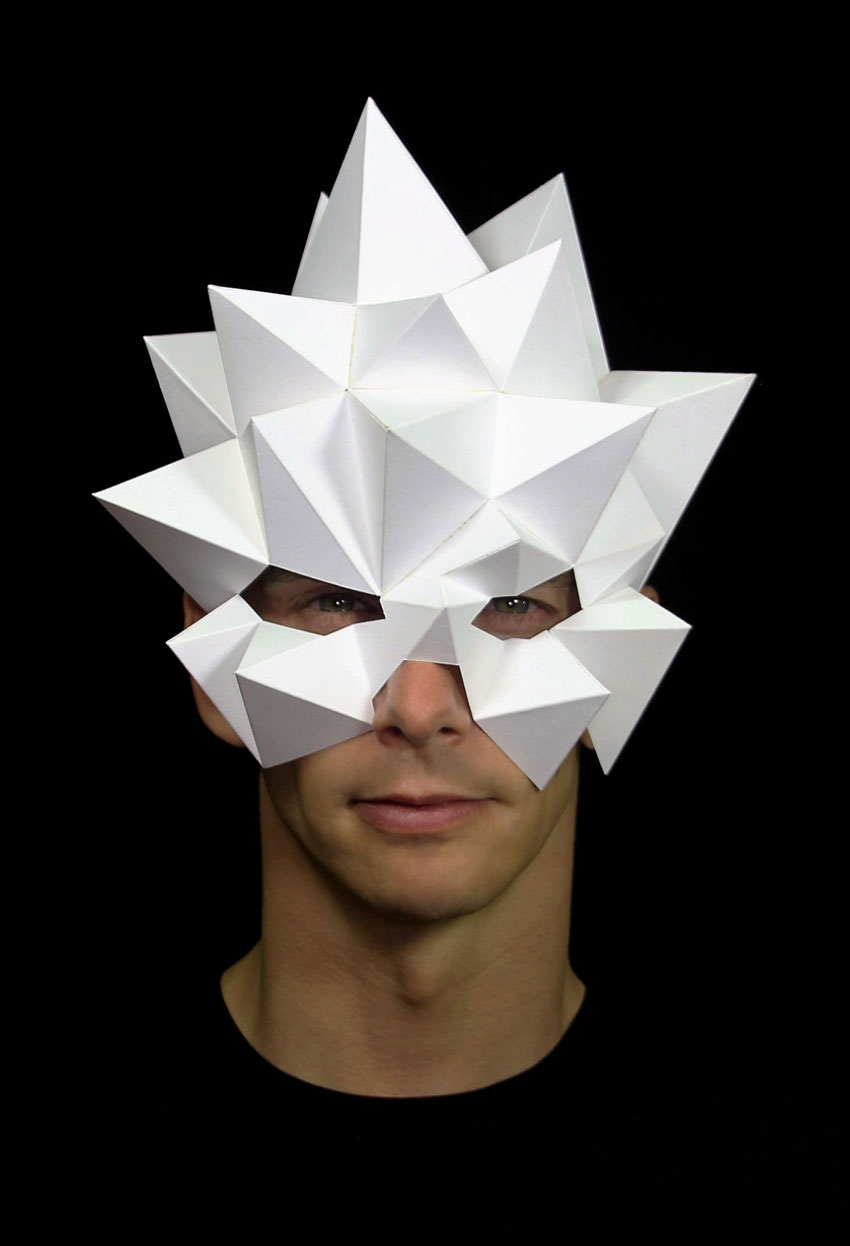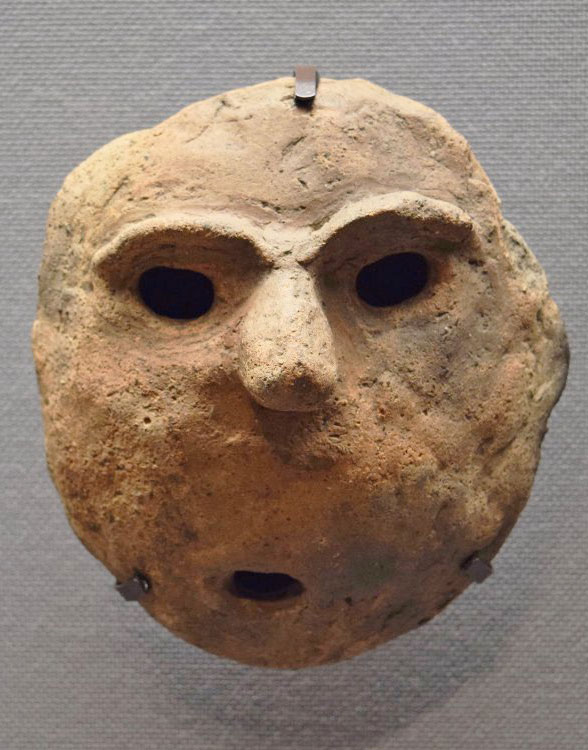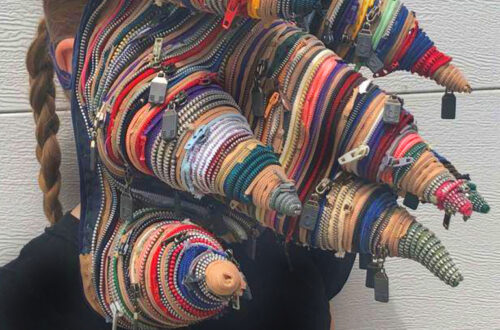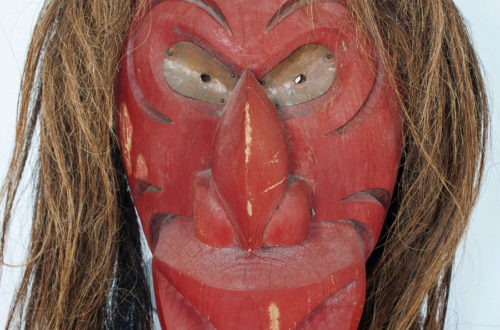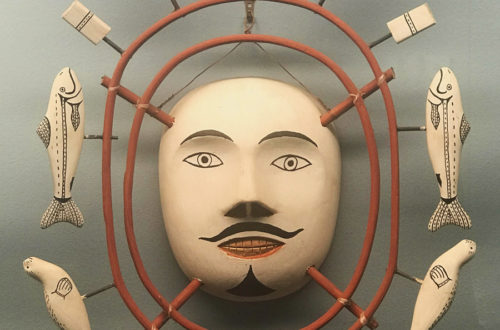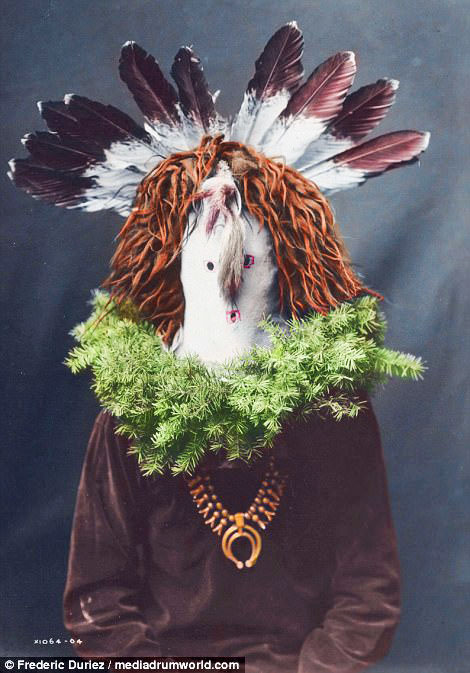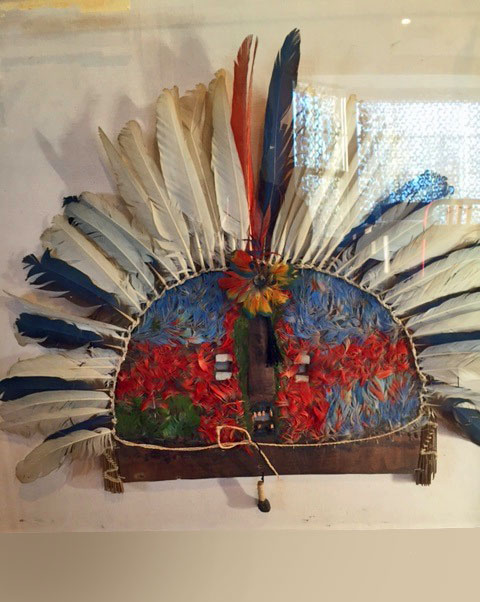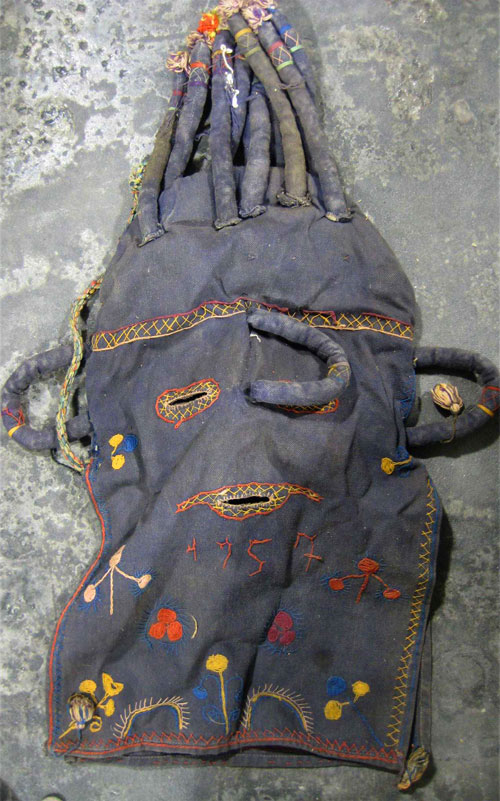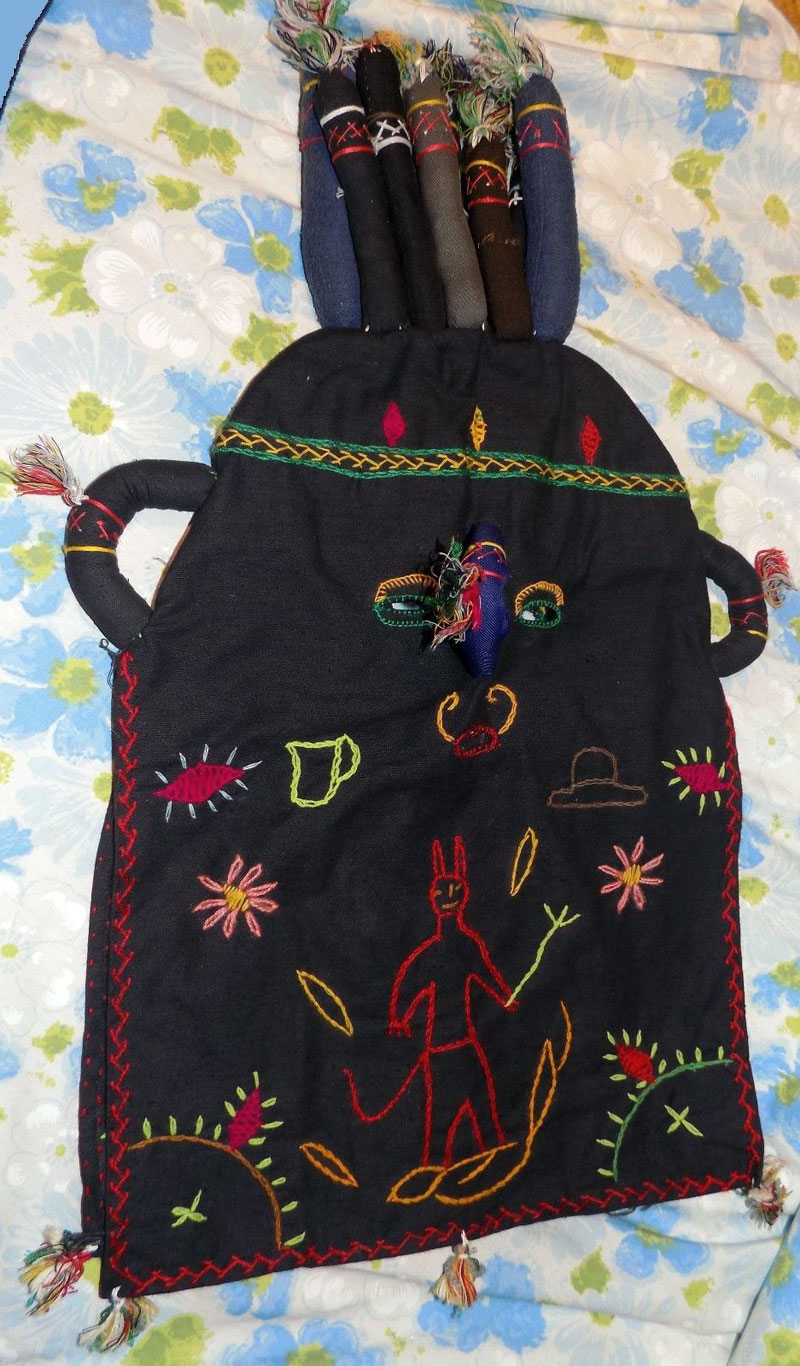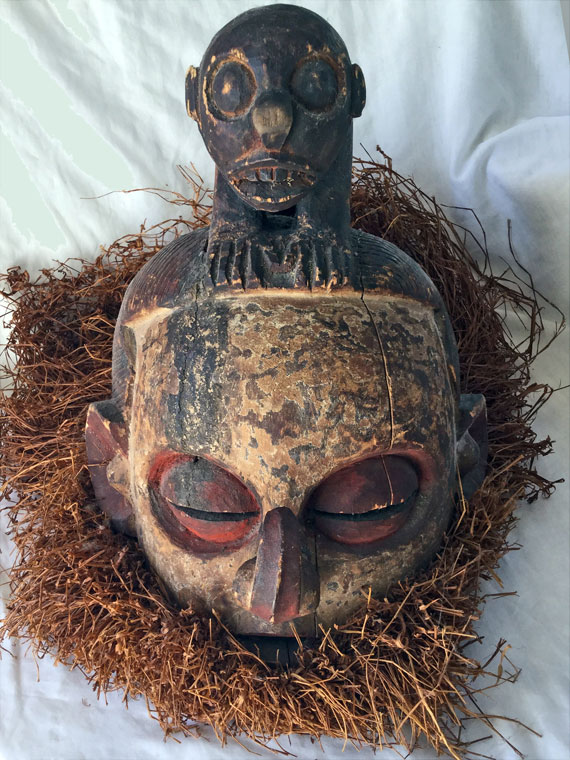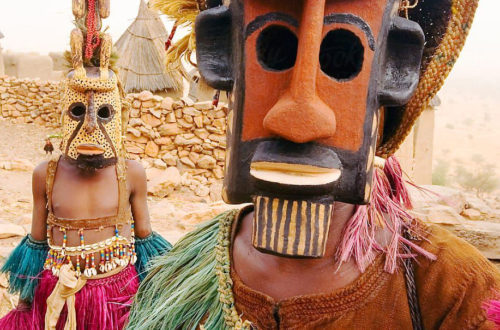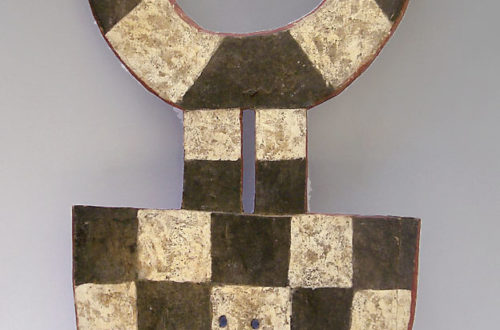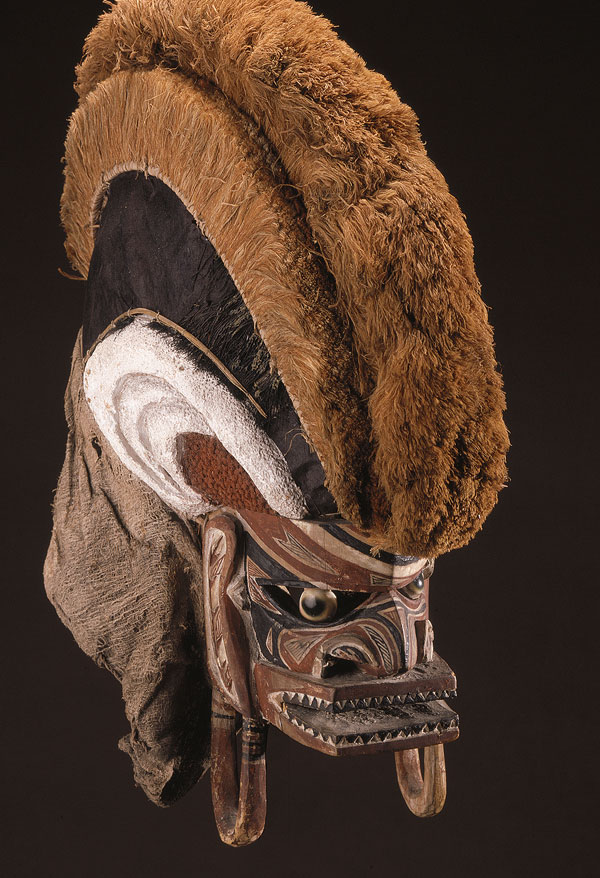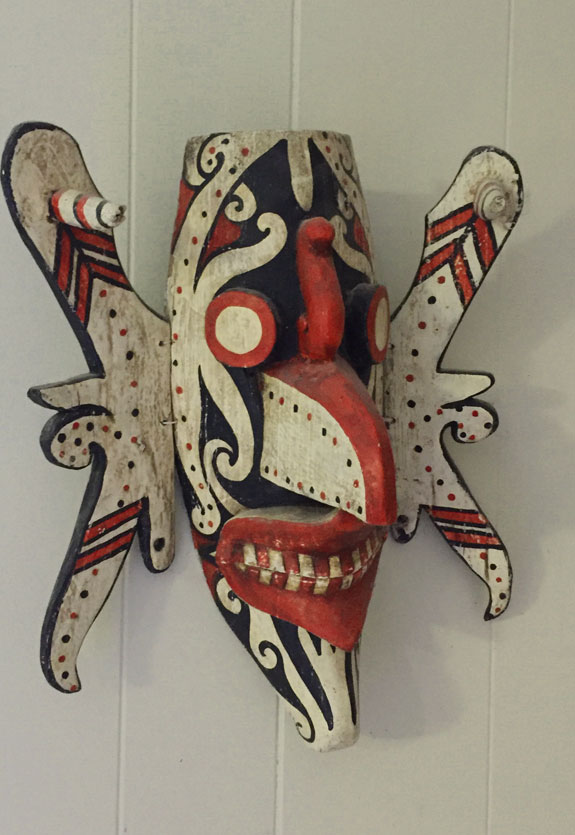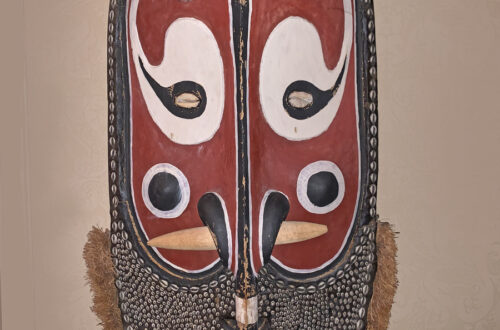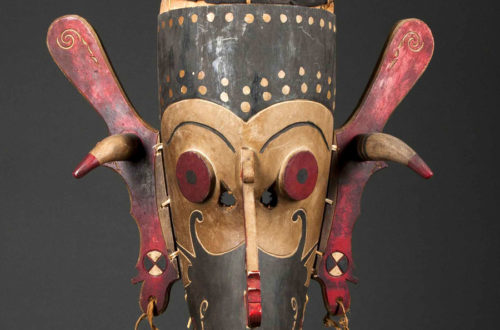This is another one of the exciting masks Kathleen discovered in the storage unit contents she won at auction. Michoacan, a state located in Westcentral Mexico, is where there are a number of highly talented carvers. In addition to masks for traditional dances, they also create extra-fancy items for sale to tourists and folk art collectors. This may be one of them. It looks like a blood-sucking bat on top of an unlucky conquistador. I’m just guessing. What do you think? Can you explain the spikes and chairs? 928
-
-
Another African mystery
Q: I sent you pictures of a mask a couple months ago… the Bambara mask from Mali. Thanks for giving me great information. Here is another of the several I have. Again, all purchased in the 70’s from a guy in Southern Indiana. They each appear older… Kevin, 927 A: The patina on the front and back looks good. Probably African, but hard for me to identify. Let’s hope someone will offer a comment. Here is what I see on the back that might be helpful. It is thinly carved and has 12 holes on the top half of the edge which are probably meant to hold some kind of…
-
Coconut mask from Puerto Rico
This is a Vejigante mask made out of a whole coconut husk in the city of Loiza, PR. (The nut has been removed from these large masks.) Many of the people who live there are of Nigerian decent. So the style of these masks is mostly influenced by the Chango warriors of West Africa, rather than the Catholic Church. There are Vegigante masks made in Ponce, PR, for the same celebration of St. James, but are made out of papier mache and look much different. This will go in the Caribbean category, which is the smallest on MasksoftheWorld.com. This category includes all of the islands plus the northern coastal areas…
-
Black man sticking his tongue out
Q: It’s not for sale, but I need to have an idea of the origin of the mask. It’s for research and I don’t even know the name. You guys seem to have some knowledge about masks. Is it Japanese? Tayra, 925 A: Could be Japanese, or from someplace else in Asia. It might have helped to see a photo of the rear. The best we can hope for is that some will send in a helpful comment. In the meantime, tell us a little about your research.
-
Very West African
Q: There was a consignment shop which I frequented as a college student. This mask appeared and I wanted to buy it. Had little money, so paid it off in increments. It is very light wood and as you can see had not been treated well. It has some kind of fur and a movable month. I tried looking for similar masks and could not find. Is it a Dan mask? Mickey, 924 A: This is one of those mixed features masks. To identify the various tribal features you would have to study mask photos from Liberia east to Cameroon. Many pieces like this are made for the tourist trade.…
-
Celebrity mask we all recognize
I collected this mask of Barack Obama when he first ran for president. It is about time I show it to my viewers, otherwise you might not recognize his young face and dark hair. Also, I want to suggest that collecting celebrity masks might be a lot of fun. These inexpensive plastic masks are readily available in all of the developed countries of the world. In addition to political leaders you could collect other kinds of celebrities as well.
-
A mask from East Greenland
Q: I managed to get the Kalaallit Inuit mask for only $75 from someone who thought it was a “Witch Doctor Mask” from Africa instead of traditional art from Greenland. Aaron, 922 A: I found this on the internet. “Not much is known about the role of masks in traditional Greenland societies and not many masks exist prior to the turn of the 20th century. The reason may lie in the mask’s strong personal link with its owner. Masks have often followed their owners to the grave or perhaps been destroyed by death. Another theory is that the mask’s power was so great that it had to be destroyed after…
-
Amazon Indian spirit mask
Q: I just uncovered this mask of my fathers who passed almost 20 years ago. It’s in a plexiglass frame, so I can only get the front view unfortunately. It has many colorful feathers and I think shell around the eyes. Any thoughts on where it might be from would be greatly appreciated. Raaismom, 921 A: Made by the Tapirape tribe in the southeast lowlands of the Brazilian Amazon, this large mask is called a “big face” in Portuguese. Note how beautiful the toucan and parrot feathers are. I believe these masks were made to display the spirits of enemy warriors. This valuable piece of Tapirape art deserves to…
-
Congo style mask
Q: I have a tribal helmet mask that my mom had and she has passed away. I only know she got it from an estate sale of a 90 yr old veteran that traveled the world. Sorry I can’t supply you with any more info, maybe you can tell me about it. Vicky, 920 A: This appears to be a traditional design from one of the cultures in the Democratic Republic of Congo. I’m not experienced enough to name the particular group, or the name of the ceremony it is used for. And there is always the chance that it combines characteristics of two or more ethnic groups. Another…
-
Spectacular mask from the South Pacific
Part of the Oceanic area is the South Pacific, which includes the small islands east of Papua New Guinea. Many of the islands were first visited by Americans and Europeans about 200 years ago at the time Africa was being colonized as well. Both areas had masks and other traditional art that fascinated the explorers. This Malagan mask from the island of New Ireland, used for ceremonies honoring the dead, is indeed spectacular. Rarely do we see Oceanic masks of this quality outside museums or books. From a museum collection, this mask is shown on page 70 of our new book, Masks of the World.
